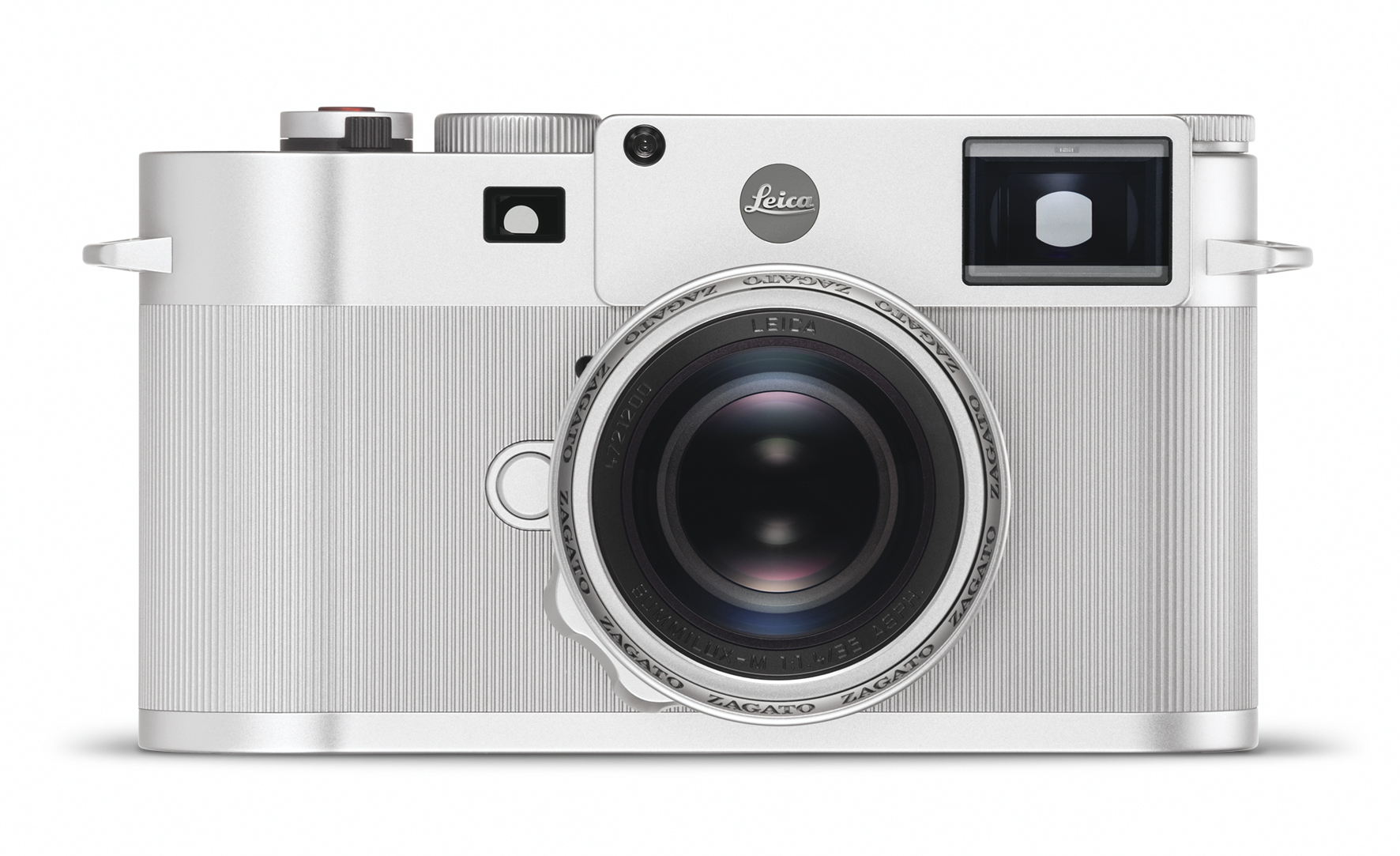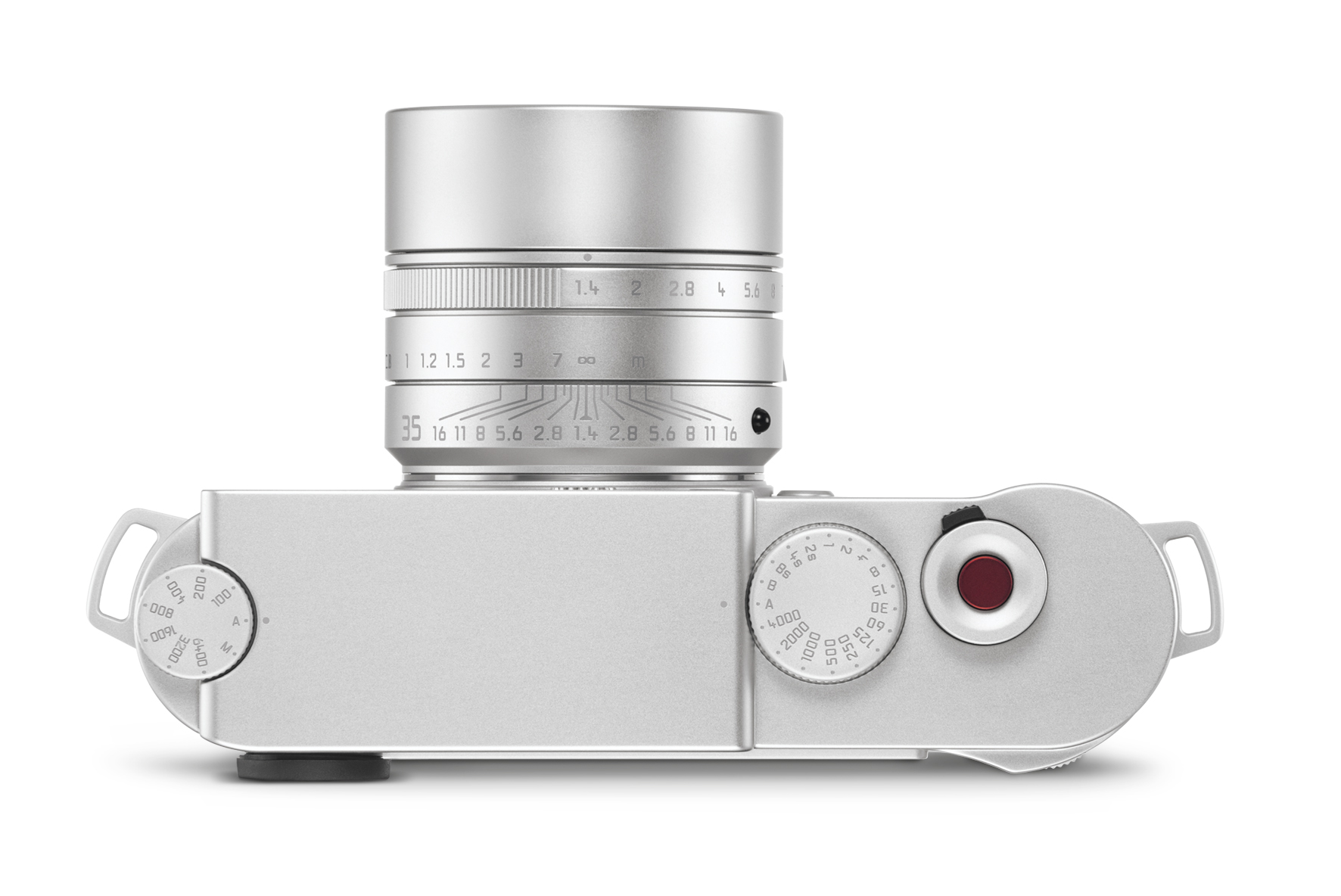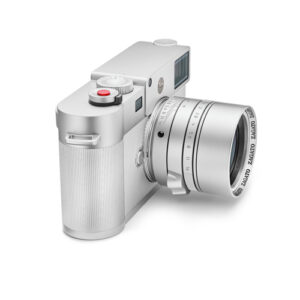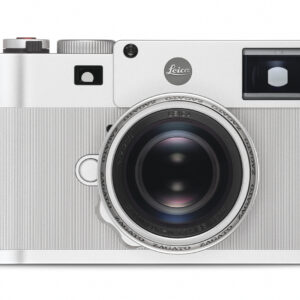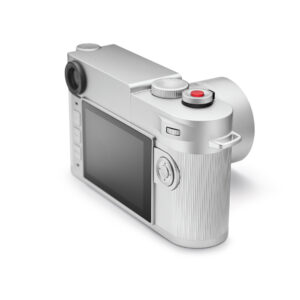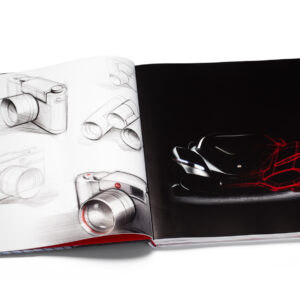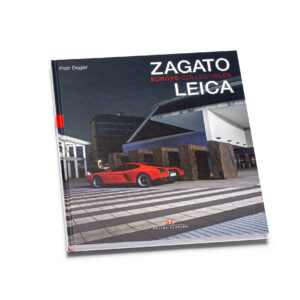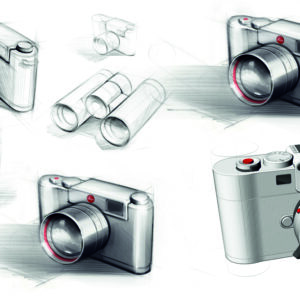- PHOTOGRAPHY
- SPORT OPTICS
- ACCESSORIES
- LEICA WATCH
- CINEMA TV
- MOBILE
Leica LUX App
Leica LUX Grip
- SUPPORT
Leica M10 “Edition Zagato”
Leica presents the essence of timeless beauty.
The strictly limited Leica M10 “Edition Zagato”with a Leica Summilux-M 35 mm f/1.4 ASPH. lens unites the finest German craftsmanship with Italian design. A camera with unparalleled design delivering an extraordinary multisensory experience.
USPs:
▶ First M10 Special Edition
▶ Designed by Zagato, Italy
▶ First Summilux-M 35/f1.4 with integrated lens hood
▶ Full aluminum camera armoring
▶ 70g less weight in comparison to serial camera
▶ Special Edition Number
▶ Strictly limited to 250 Sets
Want to be notified when this product is back in stock?
The fine arts of German craftsmanship meet Italian Design:
Leica Camera AG presents the new, strictly limited Leica M10 ‘Edition Zagato’.
| Wetzlar, 15 June 2018. With the Leica M10 ‘Edition Zagato’, Leica Camera AG presents a timelessly beautiful special edition that unites the best of German craftsmanship and Italian design. Comprising a camera and a Leica Summilux-M 35 mm f/1.4 ASPH. lens, the set takes its name from Dr Andrea Zagato, owner of the design house and automotive styling specialists of the same name, who personally designed the worldwide limited edition of 250 examples. This is now the second special edition created in collaboration between the two long-established companies. 2015 saw the launch of a limited series of binoculars with strikingly elegant design from the Italian design studio, the Leica Ultravid 8×32 ‘Edition Zagato’. Founded a century ago, Zagato has been the creator of the most beautiful coachbuilt bodies in the history of automobile construction. The exclusive Italian brand is particularly well known for its innovative use of aluminium in automobile design and construction. Today, the company continues to create special, and traditionally strictly limited, editions of cars with unique styling in Milan, where the story of success was begun by founder Ugo Zagato in 1919. The passion for aesthetics and precision is shared by Leica and Zagato in many respects. Photography also plays an extremely important role: ‘Photography plays an essential role in our work. Without the possibilities offered by photography, we would never have had the invaluable pictures and the ability to reconstruct vehicle models, and would not be able to present our work from the last decades in such an impressive way’ – emphasises owner Dr Andrea Zagato, who, together with his wife and Art Director, Marella Rivolta-Zagato, now heads the family company in the third generation. The ‘Edition Zagato’ is the first special edition of the Leica M10 camera, and offers extraordinary visual and tactile highlights. The top deck, the baseplate, the outer casing and the control elements of the camera are all manufactured from aluminium. This makes it 70 grams lighter than its serial production counterpart. Instead of the usual leather trim, the bodyshell of the camera is finished with fine grooves, which, together with details like the red shutter release button, lend the camera its unique look and feel. The integrated handgrip at the left of the body visually distinguishes the special edition from the serial production model of the M10 and makes it a delight to hold and handle. The M10 ‘Edition Zagato’ is the first Leica camera to have its own special serial number engraved on an aluminium badge on the base of the camera that is revealed only when the baseplate is opened. The Leica Summilux-M 35 mm f/1.4 ASPH. lens in the special edition set has an integrated lens hood that can be pulled out and locked in place in a single motion – a new feature for a 35 mm lens that simplifies its handling. The design of the focusing aid on the lens pays homage to a typical styling signature of Zagato automobile design, the double-bubble roofline of many Zagato models. The unmistakeable ‘Zagato’ logotype on the lens ring also indicates the role of the prominent design partner in this collaboration. In all other aspects, the technical specifications of the camera and lens in the Leica M10 “Edition Zagato” set are identical to those of tits serial production counterpart. The Leica M10 ‘Edition Zagato’ is available from today in selected Leica Stores. In addition to the camera and lens, the set also includes a carrying strap in red full-grain leather embossed with the Zagato logotype. This M-Camera is the first to feature rectangular strap lugs in the same design as those of the Zagato binoculars. The certificate of authenticity graces the packaging of the set in the form of an aluminium plate with an engraved serial number. A few examples of the Leica Ultravid 8×32 ‘Edition Zagato’ limited edition binoculars are still available. In addition to the binoculars and a case in Zagato design, the set includes a matching carrying strap and a leather wrist strap. The publication of the second volume of the coffee-table book trilogy, ‘Leica and Zagato – Europe Collectibles’, coincides with the launch of the Leica M10 ‘Edition Zagato’. The fascinating pictures show 33 Zagato models from the entire history of the brand in evocative European settings. |
| Weight | 4.5 kg |
|---|---|
| Dimensions | 30 × 28 × 20 cm |
Camera Technical Specs.
| Camera type: | Leica M10, compact digital rangefinder system camera | |
| Lens mount: | Leica M bayonet with additional sensor for 6-bit coding | |
| Lens system: | Leica M lenses, R lenses can be used with optional adapter | |
| Image Sensor: | CMOS chip,24x36mm | |
| Resolution: | DNG: 5976×3992 pixels (24MP), JPEG: 5952×3968 pixels (24MP) | |
| Data Format: | DNG (raw data), JPEG | |
| File Size: | DNG: 20-30 MB, JPEG depending on resolution and picture content | |
| Buffer Memory: | 2GB / 16 pictures in series | |
| White Balance: | Automatic, manual, 8 presets, color temperature input | |
| Storage Medium: | SD cards up to 2GB, SDHC cards up to 32GB, SDXC cards up to 2TB | |
| Menu Language: | German, English, French, Spanish, Italian, Portuguese, Japanese, Traditional Chinese, Simplified Chinese, Russian, Korean | |
| Exposure Metering: | Exposure metering through the lens (TTL), with working aperture | |
| Metering Method: | For metering the light reflected by light blades of the 1st shutter curtain onto a measuring cell: Strong center-weighted; for metering on the sensor: Spot, center-weighted, multi-field metering | |
| Metering Range: | At room temperature and normal humidity for ISO 100, at aperture 1.0 EV-1 to EV20 at aperture 32. Flashing of the left triangular LED in the viewfinder indicates values below the metering range | |
| Sensitivity Range: | ISO 100 to ISO 50000, adjustable in 1/3 ISO increments from ISO 200, choice of automatic control or manual setting | |
| Exposure Modes: | Choice of automatic shutter speed control with manual aperture preselection – aperture priority A, or manual shutter speed and aperture setting | |
| Flash Exposure Control | ||
| Flash Unit Attachment: | Via accessory shoe with central and control contacts | |
| Synchronization: | Optionally triggered at the 1st or 2nd Shutter curtain | |
| Flash Sync Time: | 1/180s; slower shutter speeds can be used, if working below sync speed: Automatic changeover to TTL linear flash mode with HSS compatible Leica system flash units | |
| Flash Exposure Metering: | Using center-weighted TTL pre-flash metering with Leica flash units (SF40, SF64, SF26) | |
| Flash Measurement Cell: | 2 silicon photo diodes with collection lens on the camera base | |
| Flash Exposure Compensation: | ±3EV in1⁄3 EV increments | |
| Displays in Flash Mode (in viewfinder only): | Using flash symbol LED | |
| Viewfinder | ||
| Construction Principle: | Large, bright line frame viewfinder with automatic parallax compensation | |
| Eyepiece: | Calibrated to -0.5 diopter; corrective lenses from -3 to +3 diopter available | |
| Image Field Limiter: | By activating two bright lines each: For 35 and 135mm, for 28 and 90mm, or for 50 and 75mm; automatic switching when lens is attached | |
| Parallax Compensation: | The horizontal and vertical difference between the viewfinder and the lens is automatically compensated according to the relevant distance setting, i.e. the viewfinder bright-line automatically aligns with the subject detail recorded by the lens. | |
| Matching Viewfinder & Actual Image: | At a range setting of 2m, the bright-line frame size corresponds exactly to the sensor size of approx. 23.9 x 35.8mm; at infinity setting, depending on the focal length, approx. 7.3% (28mm) to 18% (135mm) more is recorded by the sensor than indicated by the corresponding bright line frame and slightly less for shorter distance settings than 2m | |
| Magnification (For all lenses): | 0.73x | |
| Large-base Range Finder: | Split or superimposed image range finder shown as a bright field in the center of the viewfinder image | |
| Effective Metering Basis: | 50.6mm (mechanical measurement basis 69.31mm x viewfinder magnification 0.73x) | |
| Displays | ||
| In the Viewfinder: | Four-digit digital display with dots above and below | |
| On Back: | 3” color TFT LCD with 16 million colors and 1,036,800 pixels, approx. 100% image field, glass cover of extremely hard, scratch resistant Gorilla glass, color space: sRGB, for Live-View and review mode, displays | |
| Shutter & Shutter Release | ||
| Shutter: | Metal blade focal plane shutter with vertical movement | |
| Shutter Speeds: | For aperture priority: (A) continuous from 125s to 1/4000s. For manual adjustment: 8s to 1⁄4000s in half steps, from 8s to 125s in whole steps, B: For long exposures up to maximum 125s (in conjunction with self-timer T function, i.e. 1st release = shutter opens, 2nd release = shutter closes) | |
| Picture Series: | approx. 5 pictures per second, 30-40 pictures in series | |
| Shutter Release Button: | Two-stage, 1st step: Activation of the camera electronics including exposure metering and exposure lock (in aperture priority mode), 2nd step: Shutter release; standard thread for cable release integrated. | |
| Self-Timer: | Delay 2s (aperture priority and manual exposure setting) or 12s, set in menu, indicated by flashing LED on front of camera and corresponding display in monitor. | |
| Turning The Camera On/Off: | Using main switch on top of camera; optional automatic shutdown of camera electronics after approx. 2/5/10 minutes; reactivated by tapping the shutter release | |
| Power Supply: | 1 lithium ion rechargeable battery, nominal voltage 7.4V, capacity 1300mAh.; maximum charging current/voltage: DC 1000mA, 7.4V; Model No.: BP-SCL5; Manufacturer: PT. VARTA Microbattery, Made in Indonesia, Operating conditions (in camera): 0°C – + 40°C | |
| Charger: | Inputs: 100-240V AC, 50/60Hz, 300mA, automatic switching, or 12V DC, 1.3A; Output: DC 7.4V, 1000mA/max. 8.25V, 1100mA; Model No.: BC-SCL5; Manufacturer: Guangdong PISEN Electronics Co., Ltd., Made in China, Operating conditions: 0°C – + 35°C | |
| GPS: | Only with Leica Visoflex viewfinder attached, available as an accessory | |
| Wi-Fi: | Complies with IEEE 802.11b/g/n standard (standard Wifi protocol), channel 1-11, encryption method: Wifi-compatible WPA/WPA2 encryption, access method: Infrastructure mode | |
| Camera Body | ||
| Material: | All-metal die cast magnesium body, synthetic leather covering. Brass top panel and base, black or silver chrome plated finish | |
| Image Field Selector: | Allows the bright-line pairs to be manually activated at any time (e.g. to compare detail) | |
| Tripod Thread: | A ¼” DIN stainless steel in bottom | |
| Operating Conditions: | 0-40°C | |
| Interfaces: | ISO accessory shoe with additional contacts for Leica Visoflex viewfinder (available as an accessory) | |
| Dimensions: | (width x depth x height): approx. 139 x 38.5 x 80mm | |
| Weight: | approx. 660g (with battery) |
Lens Technical Specs.
| Angle of view (diagonal, horizontal, vertical) | |
| for 35 mm (24 x 36 mm) | 63°, 54°, 37° |
| for M8 digital (18 x 27 mm) | 50°, 42°, 28° corresponds to a focal length of approx. 48 mm with 35 mm-format |
| Optical design | |
| Number of lenses/groups | 9 / 5 |
| Focal length | 35.6 mm |
| Position of entrance pupil | 16.6 mm (related to the first lens surface in light direction) |
| Focusing range | 0.7 m to infinity |
| Distance setting | |
| Scales | Combined meter/feet graduation |
| Smallest object field | 418 x 626 mm |
| Largest reproduction ratio | 1:17.4 |
| Aperture | |
| Setting/Function | With click-stops, half values available, manual diaphragm |
| Lowest value | 16 |
| Number of blades | 9 |
| Bayonet | Leica M quick-change bayonet with 6 bit lens identification bar code for digital M models |
| Filter mount | Non-rotating, internal thread for screw-on filters size E 46 |
| Lens hood | separate, screw on metal hood (included) |
| Dimension and weight: | |
| Length | 46 / 58 mm (with / without lens hood) |
| Largest diameter | approx. 56 mm |
| Weight | approx. 320 g |











